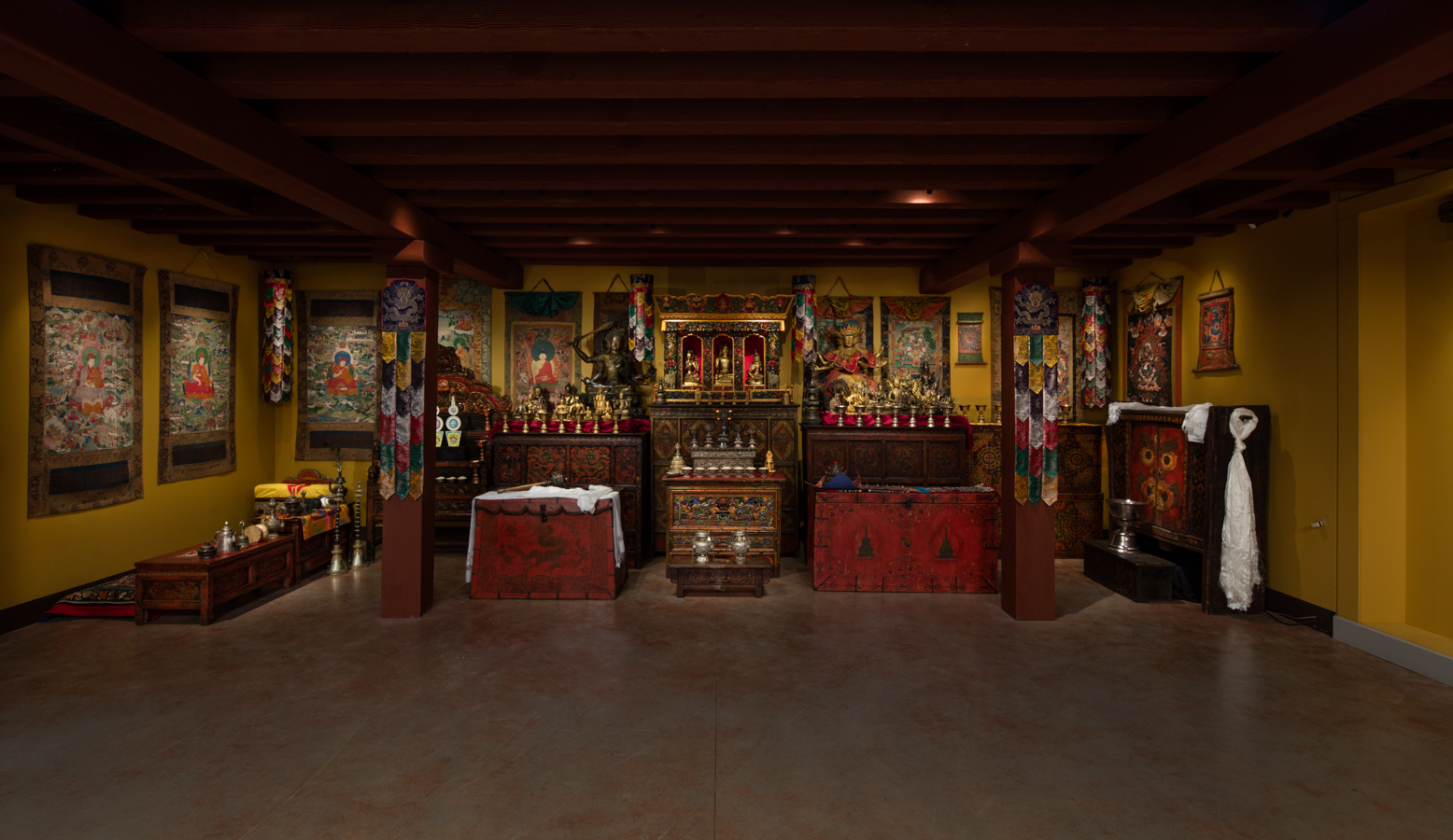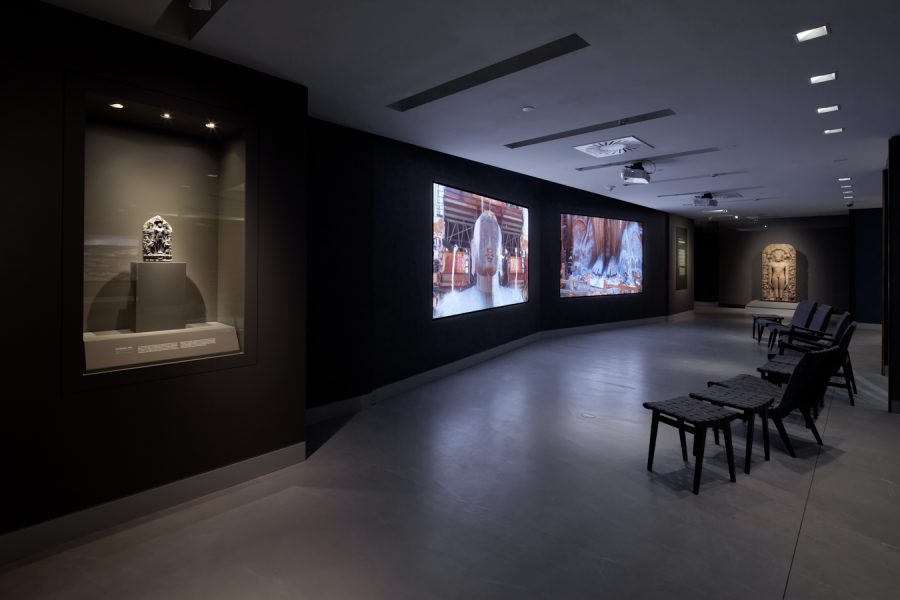Sacred Spaceswith The Tibetan Buddhist Shrine Room
Rubin Museum
150 W. 17th St., NYC

Photo by David De Armas Photography
What makes a space sacred? What spaces are sacred to you? This exhibition reflects on these questions by looking at devotional activities in awe-inspiring places. The exhibition presents three distinct but related environments shaped by acts of veneration. The centerpiece of Sacred Spaces is the Museum’s popular Tibetan Buddhist Shrine Room. Designed to evoke the aesthetics and atmosphere of a traditional shrine in an affluent household setting, this installation offers visitors the opportunity to experience Tibetan religious art in its cultural context. It includes more than one hundred objects, including scroll paintings (thangkas) and sculptures of buddhas, bodhisattvas, tantric deities, and religious teachers arranged on traditional Tibetan furniture and accompanied by ornamental textiles and ritual objects. Simulated flickering butter lamps, incense, and sounds of chanting engage the senses and complete the immersive experience.

